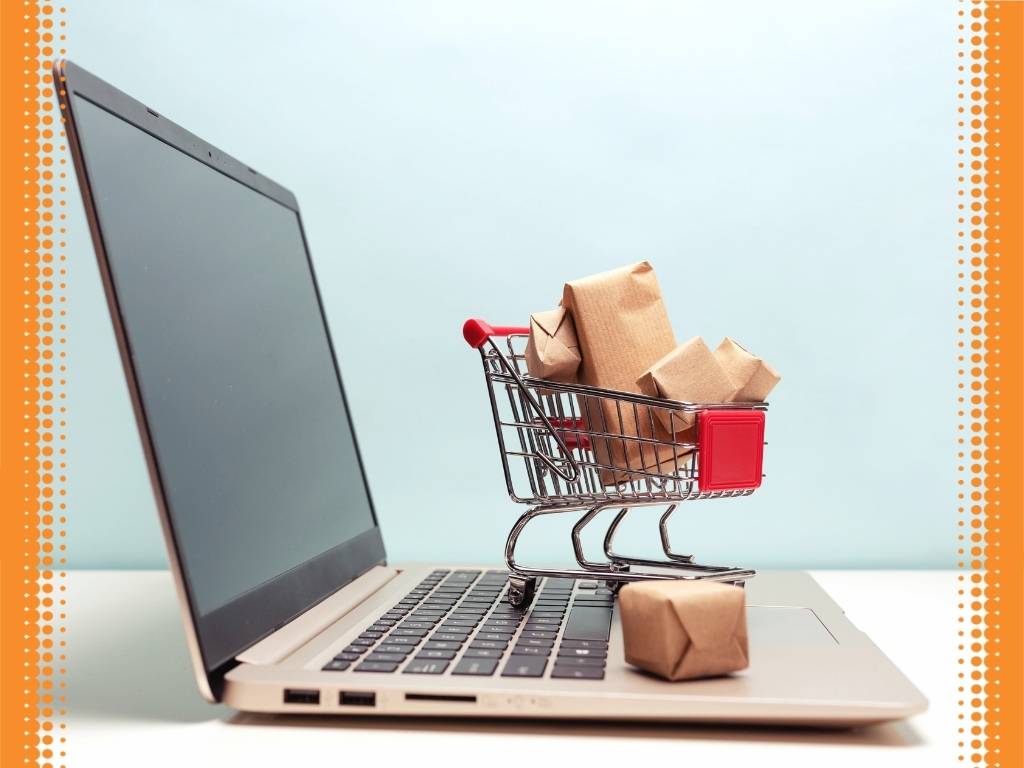Post-Pandemic eCommerce Trends
The COVID-19 pandemic has disrupted life in many ways, and online user behaviour has changed drastically as a result. With lockdown restrictions forcing store closures across the world, online shopping became the primary source for essential goods and services, as well as normal day-to-day shopping needs. With vaccine distributions scaling globally and restrictions being eased, there is a slow, but steady, crawl back to normalcy. That said, we have seen a fundamental shift in online user behaviour that may never return to ‘normal’.
In this article, we will analyze post-pandemic e-commerce trends and how the pandemic has fundamentally changed online shopping forever.

2020: The Year That Changed The World
Plainly put, 2020 was a massive year for online shopping. Before the pandemic, we expected US consumers would spend $674.88 billion on eCommerce in 2020, up 13.2% from 2019. With the arrival of the pandemic, however, eCommerce sales exceeded this by a mile at $799.18 billion. This was a 33.6% increase in retail sales from 2019 to 2020 in the US alone.
Canadian e-commerce retail sales saw a similar 71% increase in 2020, and 85% of Canadians say that their shopping behavior has been affected by COVID-19, while 50% report they are now making online purchases for typical in-store items. It is safe to say that COVID-19 has accelerated the migration to online shopping ahead by many years across multiple verticals, and this behaviour is likely here to stay.
Another key metric that helps us understand how online user behavior has changed is the average time spent online. The average time spent online per day in the US increased from 6 hours 49 minutes in 2019 to 7 hours 50 minutes (a 15% increase). Mobile devices contribute to nearly half of that time spent online, as they accounted for almost 4 hours of time spent online for people in the US. The average time spent on mobile devices also saw an increase of almost 25 minutes in 2020 as compared to the previous year. This increase is expected to continue, or even accelerate over the coming years.
2021: The Path Forward
With the paradigm-shifting changes that we’ve seen in the online behavior landscape, it is essential for businesses to pivot to continue to drive new users and retain existing users that have been serviced through the pandemic. It is predicted that while year-over-year growth will not be as high as the last year, building upon the massive 2020 increase will be essential to maximize revenue for businesses going forward. The longer the new behaviors persist, the more ingrained they will become. As per a Google BCG study, more than 1 in 3 consumers said that they expect to visit physical stores less frequently after the pandemic.
It must also be noted that the “click and collect” delivery option has gained significant momentum over the last year. 30% of consumers found that this method had become a normal part of their routine in November 2020, compared to 18% in April 2020. Retailers must look at these changes to the delivery process not just as current tactics, but rather as part of their long-term reality. Using shipping and return annotations in Google Search and Shopping results across free and paid listings is a surefire way to get the message across to prospective customers.
The pandemic has made online shopping the main path for product purchases for many consumers, but with restrictions easing there is a definite resurgence of in-store purchases as well. As per the “Google BCG Path to Purchase Study”, the motivations to return to in-store purchases can be classified into 4 categories: convenience, immediacy, in-person experience, and product trial before purchase. Categories over-indexed on one of two pairs of these motivations:
- Convenience or Immediacy: This motivates approximately 40% of consumers shopping in-store for grocery, beauty and toiletries, pet care, health care, small appliances, home improvement, and auto parts.
- Experience or Product Trial: These are important motivations for shopping in store for jewelry, handbags, and accessories, apparel and footwear, home furniture, mattresses, and major appliances.
Key Takeaways:
A true multi-channel shopping experience must deliver a consistent brand experience everywhere you sell to meet your customers where they are and build relationships that transcend channels. The experience should also include an emphasis on optimizing your business through channel diversification and comprehensive integration of your data and systems. Given that customers are using a multi-channel approach in their path to purchase, it will be critical for retailers to also use a multi-channel approach for servicing their customers. Below are a few points that retailers can consider while developing this strategy from a recent Google BCG study:
- The future role of our physical stores: For multi-category retailers, the key to bringing in and keeping people in-store is to try and replicate some of the ease and simplicity of online shopping. This could include providing services such as additional contactless checkout next to convenience lanes, or capitalizing on features like product trials. The rethinking of fitting-room operations should enable a seamless product-trial experience for in-store customers.
- Online-offline integration: Merging online with offline is another important component in retailers’ digital growth plans. Thinking of ways to make engaging digital experiences both at home and in-store is a great way to ensure customer interest and loyalty. Virtual fitting rooms and interactive shelf displays are just some ways to integrate the online and offline experiences that can benefit both the customer and retailer.
Customers can also complete the product research phase online and, depending on the immediacy of the purchase, can choose to visit the local store nearby and purchase the product offline. For example, many new customers go to stores so that they can try out new products in person (such as testing a mattress).
Applying this insight, retailers with both in-store and online channels should think about how best to incentivize new customers to come to stores to try out new products and how best to serve them (such as by enhancing the showroom experience). A seamless online-offline brand experience should help with repeat purchases from such customers. - Improve the economics of e-commerce fulfillment: Matching the urgency of need for delivery speed can help mitigate the economic pressure of providing fast delivery everywhere for everything (in other words, not everyone needs everything fast). In some categories, like apparel and footwear, most retailers are delivering products sooner than consumers say they need them. In others, like major appliances, 26% of consumers say they are not getting products fast enough.
- Focus on improving the mobile shopping experience: Optimizing the consumer experience for mobile devices is just as important as it is for desktop or tablet devices. Since the pandemic’s onset, more than a quarter of online shoppers have shopped on their mobile devices, even though many have had nearly constant access to their home computers. Retailers need to recognize the distinctive aspects of each channel and optimize the experience accordingly. If a company does not offer all of their products and experiences conveniently on mobile, they risk having consumers go elsewhere.
- Utilizing first party data: First-party data provides a competitive advantage in various retail sectors because it provides the opportunity to gather insight organically, without third-party assistance. Coming up with a plan to generate more data about customers will assist in long-term gains. Ways to do this include loyalty programs, incentives/offers, personalization/customization, newsletters, eCommerce and delivery. CRMs and customer databases are becoming the holy grail of ecommerce.
- Strategy for acquiring “dislodged” online consumers: The surge in e-commerce and the high share of new online shoppers provides an opportunity to acquire “dislodged” consumers. A “dislodged” customer is someone who is in the purchase cycle and willing to try out new brands. By leveraging touchpoints like search, social media, video, online ads and influencer marketing, as well as making category-based adjustments, you can grow your customer base. As per another Google BCG survey, Consumers shopping for special occasions—such as a holiday, anniversary, or birthday—are more likely to buy from a new retailer. These occasions create peak moments for using digital marketing to acquire new customers. Companies should also optimize their SEO strategy to target consumers looking for gifts or other special purchases.
Closing Thoughts
The pandemic has fundamentally changed the way people shop. Winning and retaining new customers while providing a seamless shopping experience will help retailers maximize revenue. If this user base can then be leveraged during this shopping season through effective messaging and pricing, you can expect a very successful peak shopping season.
We’d love to hear how you are (or have been) preparing for the changes to shopping behavior this year. Want to bounce ideas off of us? Drop us a line at bd@vovia.com, or connect with us on social!
